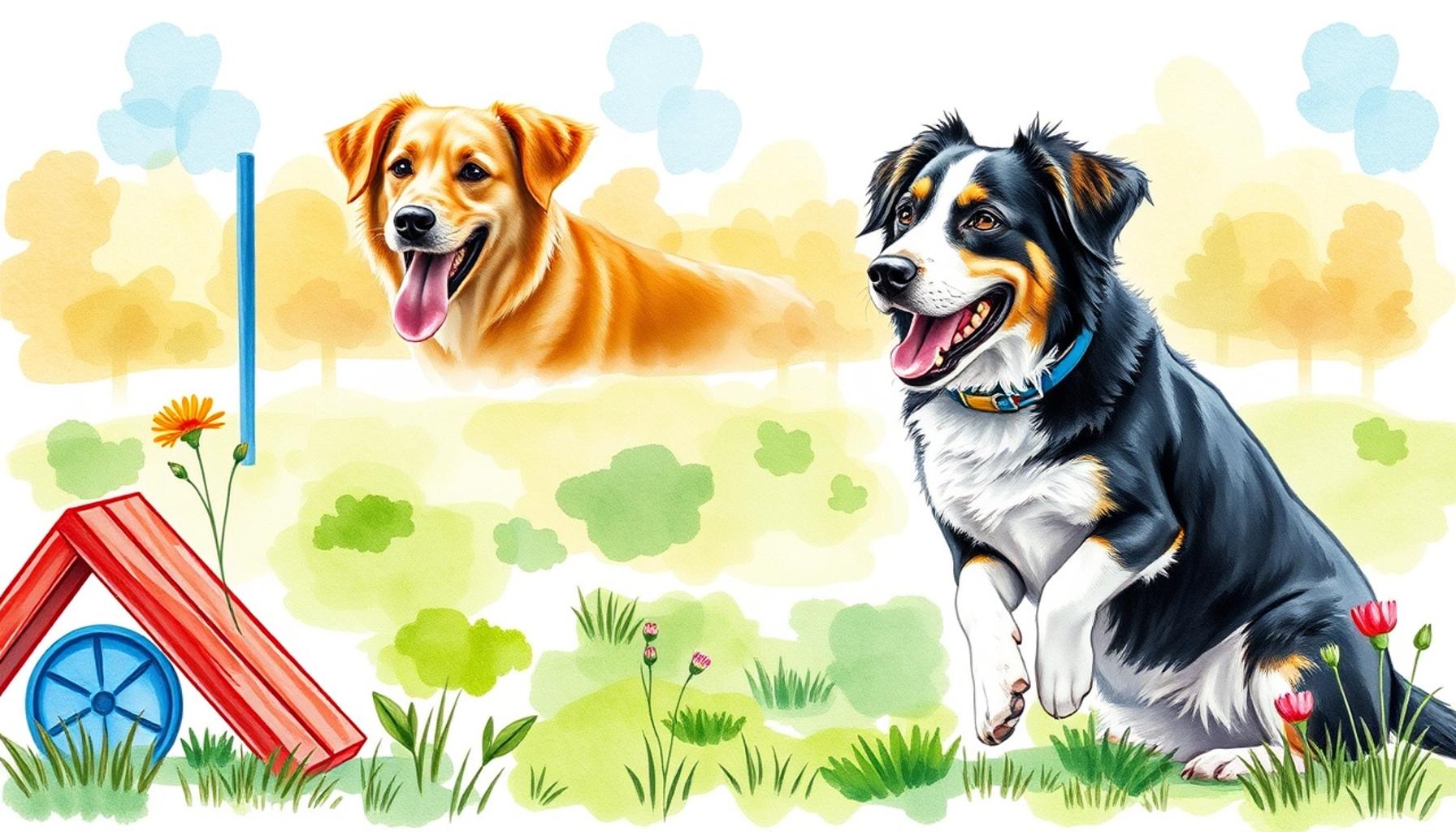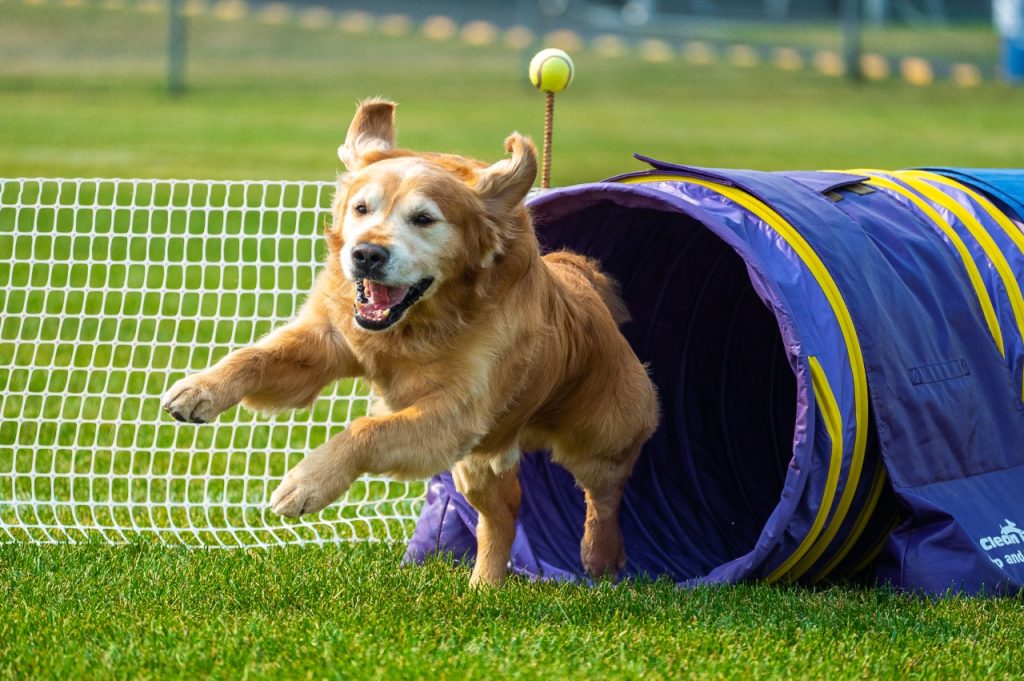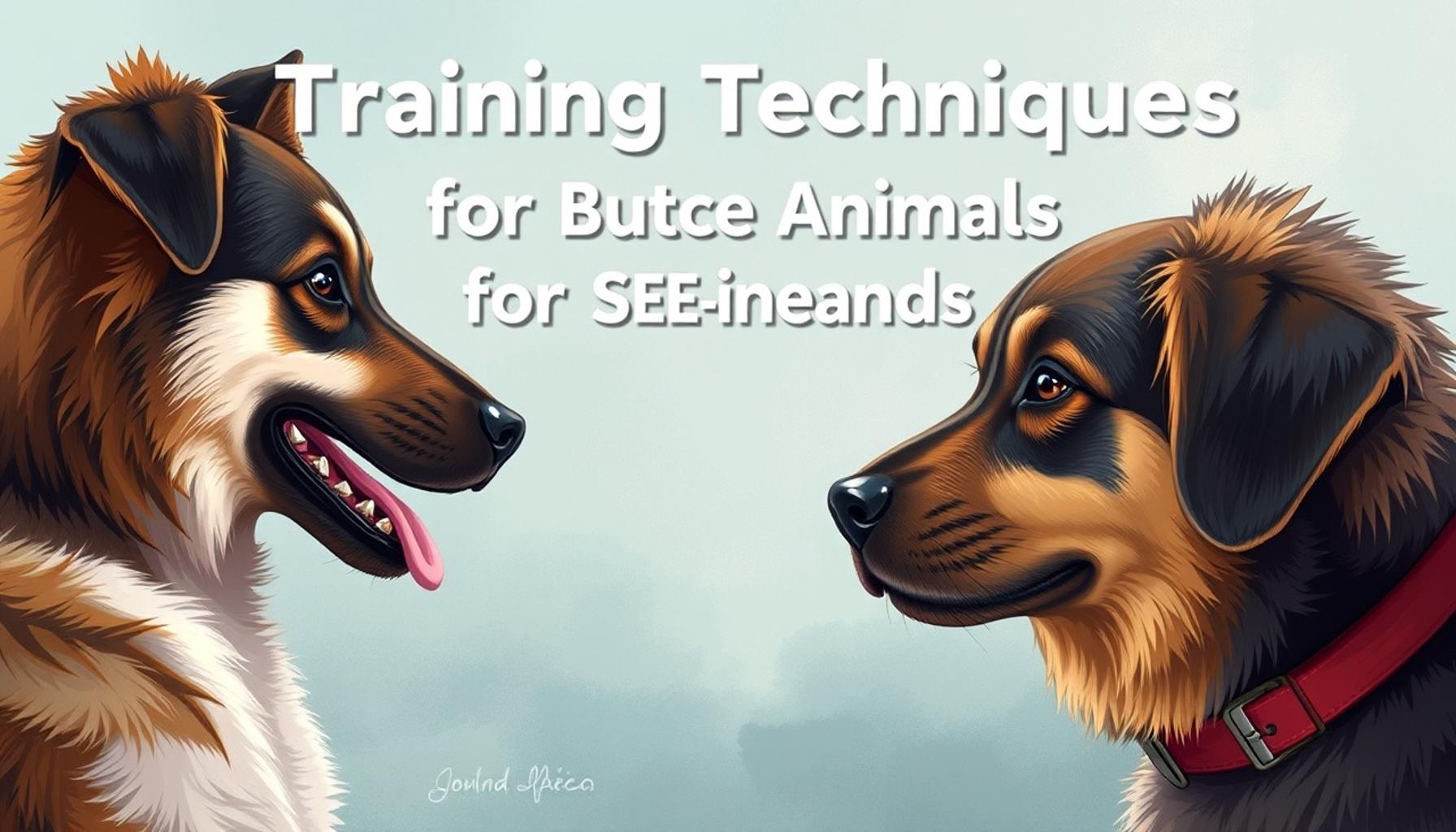Incorporating Agility Training for an Active Lifestyle with Your Dog

Discover the Thrills of Agility Training
Are you looking for a way to enhance your bond with your dog while also promoting their physical fitness? Agility training offers a dynamic and engaging approach that caters to both! This fun and challenging activity builds teamwork, sharpens your dog’s skills, and keeps you both active.
The benefits of agility training extend far beyond mere recreation. With the rise in pet ownership across the United States, many dog owners are now seeing agility training as a viable option not just for competitive endeavors but also as a way to enrich their pets’ lives. For those unfamiliar, agility training involves guiding your dog through a variety of obstacles such as jumps, tunnels, weave poles, and seesaws. It requires quick thinking, coordination, and a good deal of energy, making it an ideal outlet for many high-energy breeds.
Here are some key benefits of incorporating agility training into your lifestyle:
- Physical Fitness: Engaging your dog in agility training not only boosts their stamina and strength, but also improves their flexibility and balance. A few minutes of agility practice can provide a stimulating workout far more effective than a standard walk around the block.
- Mental Stimulation: The varied challenges of an agility course require dogs to think on their feet. As they learn to navigate new obstacles, they develop problem-solving skills and gain confidence. This mental engagement is particularly beneficial for breeds with high intelligence, such as Border Collies and Poodles.
- Bonding Opportunities: As you and your dog work together to navigate courses, you cultivate communication and trust. Dogs often mirror their human companions, and the reciprocal nature of agility training can significantly reinforce your bond.
Many pet owners in the United States are discovering that agility training is not just for competitive teams. It can be a daily adventure that fits into a busy lifestyle. A perfect start would be to set up a small course in your backyard, utilizing everyday items like cones or garden chairs for jumping practice. Alternatively, joining a local club offers opportunities for socialization and learning from experienced trainers.
Curious about how to get started? Consider these initial steps:

- Research local classes: Many communities have agility clubs or trainers that specialize in this exciting sport. These professionals can provide guidance tailored to you and your dog’s needs.
- Buy equipment: Start with basic items like jumps and tunnels. There are numerous online retailers and local pet shops offering kits designed for beginners. You can even create homemade obstacles using simple materials.
- Practice regularly: Consistent practice is key. Establish a schedule where you can dedicate time each week to agility training. Keep sessions short and fun to maintain your dog’s enthusiasm.
Prepare to unleash your pup’s potential and revolutionize both your lifestyles through agility training. From fostering physical and mental fitness to creating joyful memories together, the journey into agility training is bound to be an exhilarating adventure for you and your furry friend. Are you ready to embark on this journey together? If so, there’s no better time than now to get started!
DIVE DEEPER: Click here to learn effective training strategies
Getting Started with Agility Training
If you’re ready to transform your dog’s exercise routine, incorporating agility training into your lifestyle can be a game-changer. Not only does it enhance your dog’s physical fitness, but it also enriches their cognitive skills and strengthens your relationship. To embark on this exciting journey, you need to consider a few essential aspects that will set you and your dog up for success.
First and foremost, it’s important to understand the fundamentals of agility training. Typically, an agility course consists of various obstacles that challenge your dog’s dexterity and speed. But agility training is not just about navigating these obstacles; it’s also about building a strong partnership between you and your pet. This collaborative approach encourages communication, trust, and teamwork, making the training sessions even more rewarding.
Choosing the Right Equipment
To get started, you don’t need to invest in expensive equipment right away. Beginning with simple items can provide all the stimulation your dog needs. Here’s a brief list of basic agility training equipment:
- Jumps: These can be constructed using PVC pipes or even broomsticks balanced on bricks. Start with low jumps to help your dog build confidence.
- Tunnels: Collapsible tunnels can be purchased from pet stores, or you can use cardboard boxes arranged in a tunnel shape for initial practice.
- Weave Poles: You can create weave poles using simple objects like traffic cones or stakes placed in a row.
- Seesaws: A sturdy plank on a pivot can serve as a seesaw. Make sure it’s secure and safe for your dog to walk across.
Establishing a home-based agility course allows for convenient practice sessions, fitting well into busy schedules. You can easily train your dog in your backyard or even in your living room, depending on the available space.
Finding Community Support
While practicing at home is excellent, consider seeking support from the agility community. Joining local agility clubs can provide valuable resources and social opportunities for both you and your dog. Many clubs offer organized training sessions, competitions, and social events which are excellent for encouraging a healthy and active lifestyle. Plus, the camaraderie found in these groups can motivate you to maintain your commitment to agility training.
Engaging in agility training with your dog opens up a world of adventure and excitement. As you both learn and grow together, you will not only promote your dog’s physical and mental well-being but also create lasting memories that will strengthen your bond. Plus, it’s an incredible way to meet fellow dog lovers and share tips and tricks for successful training.
As you delve into the world of agility training, remember that patience and positivity are key. Every dog progresses at their own pace, and celebrating small victories can make all the difference in your training experience. Get ready to embrace an active lifestyle with your furry friend, and witness firsthand how agility training can be a thrilling and rewarding journey for both of you.
| Advantages | Impact on Active Lifestyle |
|---|---|
| Enhanced Bonding | Agility training fosters a strong relationship between owner and dog through teamwork. |
| Physical Fitness | Incorporating agility exercises helps dogs stay fit while owners maintain an active routine. |
| Mental Stimulation | Agility tasks challenge dogs cognitively, enhancing their decision-making skills. |
| Social Opportunities | Agility training often occurs in group settings, allowing dogs and owners to connect with others. |
| Improved Focus | Training enhances attention span and responsiveness of pets in various environments. |
Agility training not only engages dogs physically but also mentally, facilitating a well-rounded and active lifestyle. This approach encourages owners to spend quality time outdoors, participating in a dynamic training routine that leads to a more stimulating environment for both. As both dogs and owners go through agility training, they experience a unique journey of learning and growth—one that promotes overall health. The activities within such training sessions are designed to challenge dogs to maneuver through tunnels, weave through poles, and navigate obstacles, thus providing them with comprehensive routines that enhance fitness levels while keeping boredom at bay. Discover how incorporating these practices into your routine can transform the way both you and your dog engage not only with each other but also with the world around you. Embrace the joy and excitement agility training can bring to your lives together!
DISCOVER MORE: Click here to learn about the impact of pet food choices
Training Techniques for Success
As you begin agility training, the methods you employ will significantly impact your dog’s progress and enthusiasm. Utilizing positive reinforcement techniques can create a fun and engaging environment that encourages your dog to excel in their training. Reward-based training often results in a more motivated and eager learner. Use treats, toys, or verbal praise to celebrate your dog’s achievements. This positive feedback loop not only helps build their confidence but also strengthens the bond you share.
Implementing the shaping method can be particularly beneficial when introducing new obstacles. This technique involves breaking down a task into small, manageable steps. For example, if you’re teaching your dog to navigate a tunnel, start by rewarding them for simply approaching it. Gradually increase the criteria for rewards until your dog is successively running through the entire tunnel.
Integrating Cardio and Strength Training
Agility training is not solely about mental stimulation; it emphasizes the physical health of your dog. Incorporating various forms of cardiovascular and strength training can enhance your dog’s agility performance and overall fitness. Fun activities such as jogging, hiking, or even playing fetch can build stamina. Additionally, exercises like canine yoga or balance training can improve your dog’s core strength and flexibility, both of which are crucial in agility courses.
To add a twist to regular routines, you can create a circuit that combines agility tasks with cardio intervals. For instance, after completing a jump, engage your dog in a short sprint. This method not only makes exercise enjoyable but also promotes endurance and speed necessary for agility performance.
Setting Goals and Tracking Progress
As with any training regimen, setting clear and achievable goals allows for measurable progress. Begin with specific objectives for each training session, whether it’s mastering a particular obstacle or improving your dog’s speed. Utilize a training journal to document your dog’s successes and any areas requiring improvement. This awareness can motivate both of you and offer insights into your training methods.
Engaging in agility trials and competitions can also be fulfilling, offering goals beyond home-based training. The competitive aspect encourages not just your dog, but also you, to strive for improvement and excellence. Many local organizations host events ranging from novice to advanced levels, providing a great platform for testing your skills as a team.
Incorporating Agility Into Daily Life
One of the best aspects of agility training is its adaptability to any lifestyle. Whether you have a farm, a backyard, or an apartment, consider infusing agility into your daily routine. Agility drills can be harmonized with your walks—add in short obstacle courses along your path. You can also engage your dog in outdoor settings such as dog parks, where they can train with you and socialize with other dogs.
Additionally, consider themed agility playdates with friends who also have dogs. Sharing training tips and exploring new techniques can make agility training a more social and enjoyable experience. Community engagement enhances not just your dog’s abilities but builds friendships for you both.
By creatively incorporating agility training into your everyday life, you unleash endless opportunities for improving your dog’s fitness and happiness. This dedication to an active lifestyle not only fulfills your dog’s physical and mental needs but promotes a vibrant and engaged life for both of you.
DISCOVER MORE: Click here for essential training tips
Conclusion
Incorporating agility training into your dog’s routine offers a multifaceted approach to enriching their life while enhancing your own physical well-being. It’s not merely a response to exercise needs; it is an opportunity to forge stronger bonds, stimulate intellect, and produce a well-rounded companion. By using positive reinforcement techniques, you ensure a positive learning environment, laying the foundation for continuous growth and fun. Furthermore, embracing the versatility of agility training makes it accessible, regardless of your living situation.
It’s vital to remember that the journey in agility training is continuous. Setting realistic goals allows you to witness progress and encourages consistency. Documenting achievements and milestones not only fosters an unwavering commitment but also transforms the training into a rewarding experience for both you and your furry friend. The competitive aspect of agility trials further inspires improvement and offers a sense of community among dog enthusiasts.
Finally, agility training reflects more than just a hobby; it symbolizes a lifestyle. By integrating it seamlessly into your daily life, such as through engaging walks or social playdates, you promote a more active, vibrant existence. This dedication to an active lifestyle does not merely meet your dog’s physical and mental needs; it enriches your shared experiences, leading to a healthier, happier partnership. Explore the endless possibilities that await and discover how agility training can transform not only your dog’s life but yours as well.


